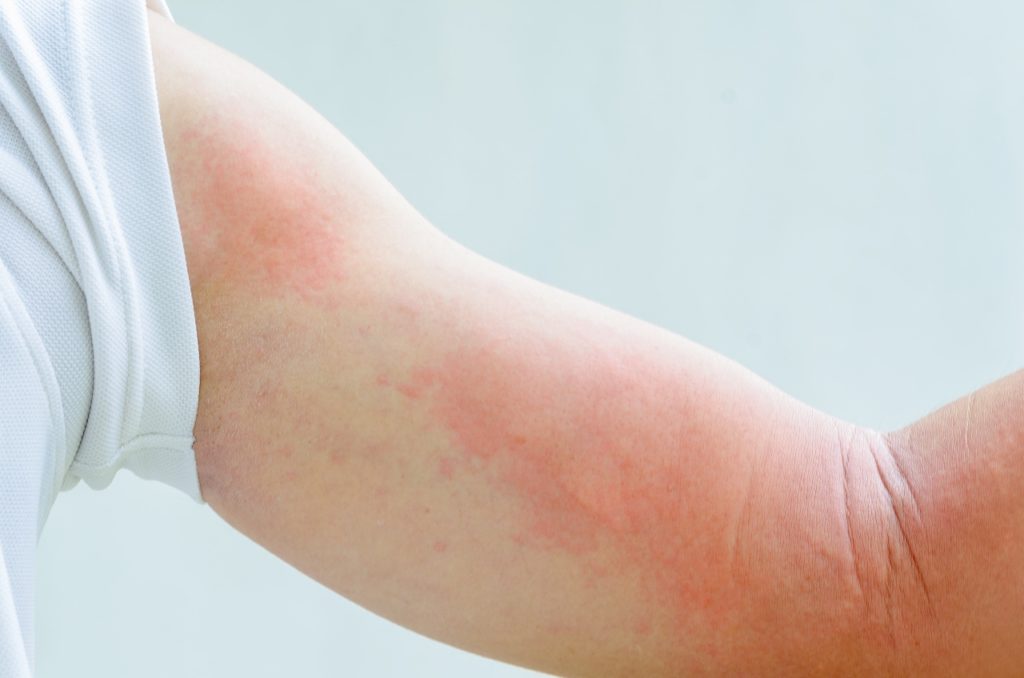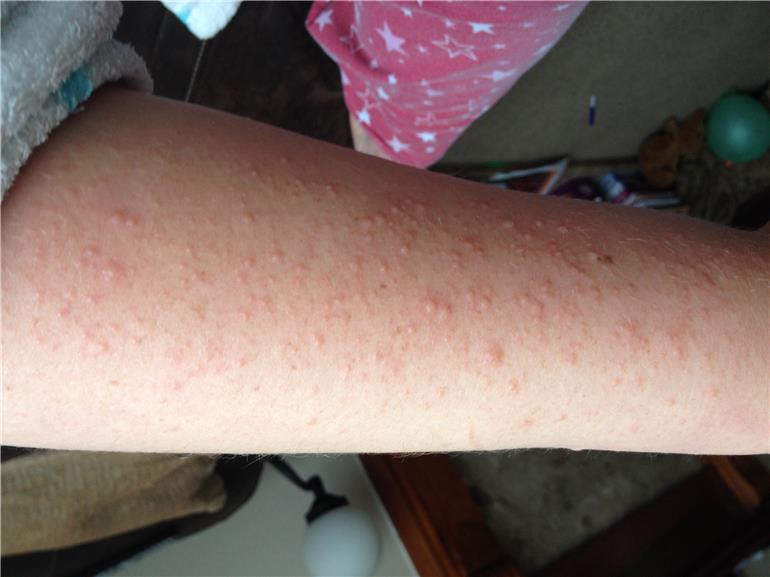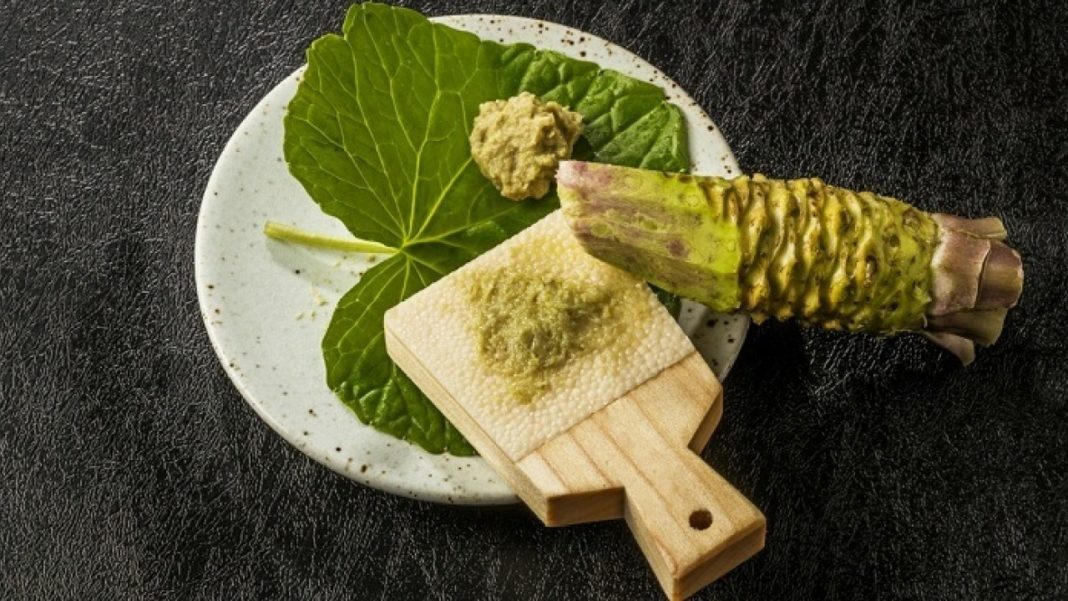The polymorphous light eruption is also known as polymorphic light eruption. It is a rash that is caused by sun exposure in people who have developed sensitivity to sunlight. This rush usually appears as red, tiny bumps or slightly raised patches of skin. The polymorphous light eruption most often happens during the spring and early summer days when the person’s exposure to sunlight increases.
Repeated episodes are less likely at the summer progresses. This rash often recurs each year after the first incident. The polymorphous light eruption usually goes away on its own without scarring in a period of ten days. Those people who have severe or persistent rashes may need treatment with medications.
Symptoms
Contents

The term “eruption” refers to the rash which usually appears thirty minutes to several hours after exposure to sunlight. This rash usually appears on the body which tends to be covered during winter but exposed in the summer, like the front of the neck and arms, and the upper chest. Some characteristics of this rash include:
- Itching or burning
- Red, raised rough patches
- Dense cultures of small bumps and blisters ‘
There are rare cases when people can have other symptoms, like nausea, headache, chills or fever. These conditions can be result of an associated sunburn rather than polymorphous light eruption. If you have any rash with no obvious cause, such as a known allergy or recent contact with poison ivy, then visit your doctor as soon as possible. The rash caused by polymorphous light eruption looks similar to rashes caused by other diseases and some of them are serious.
This is a reason why you should get proper diagnosis and treatment. You should seek immediate medical care if your rash is accompanied by fever; painful or widespread. You should tell your doctor what kind of symptoms you have and if you have taken some vitamins, supplements or medication for your treatment of polymorphous light eruption, then tell him/her. You should avoid sun whenever possible so you will avoid worsening of your condition.
Causes
The exact cause for the polymorphous light eruption is not well understood. This rash appears in people who have developed sensitivity to components of sunlight and in particular UV radiation from the sun or other sources, such as tanning lamps or tanning beds. This sensitivity is known as photosensitivity. It is resulting in immune system activity which causes a rash.
- UV radiation: We know that the UV radiation is a wavelength of sunlight in a range too short for the human eye to see. The UV light which reaches the earth is divided into 2 wavelength bands – UVA (ultraviolet A) and UVB (ultraviolet B). The person who has photosensitivity can react to both types of UV radiation. The UVB does not penetrate glass, but the UVA does. UVA can penetrate through most sunscreens. The exposure to sunlight through windows or even sunscreen – protected skin can cause a reaction in some people who have photosensitivity.
- Photosensitivity: The sensitivity to sunlight lessens with the repeated exposure in the polymorphous light eruption. The features of the polymorphous light eruption are somewhat predictable:
- It is noticed that some people gradually become less sensitive over several years and eventually no longer experience the annual rash
- It is noticed that after the first episode of polymorphous light eruption, additional episodes are likely to recur each spring or early summer
- Episodes are likely to happen as the summer progresses
- The episode of this condition is most likely to occur after the first one or two exposures to sunlight after a long period of no exposure. Usually, this means that an episode happens during the spring or early summer or during a winter vacation in a sunnier location.
Risk factors
Every single person can develop polymorphous light eruption, but there are some factors which are associated with an increased risk of this condition, such as
- Having a family history of the condition
- Having light skin and living in northern regions
- You are experiencing the first episode during the teenage years or 20s
- Being female




